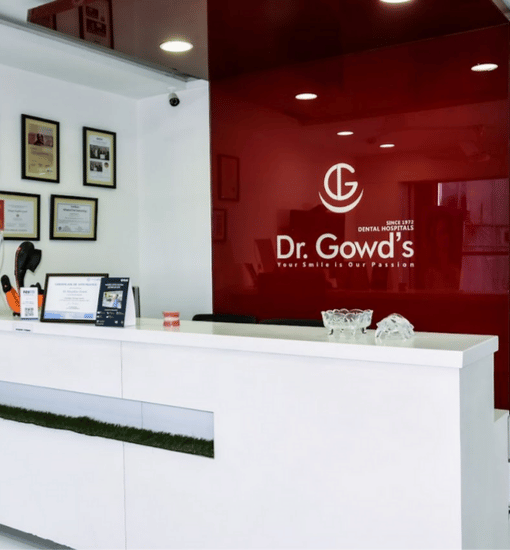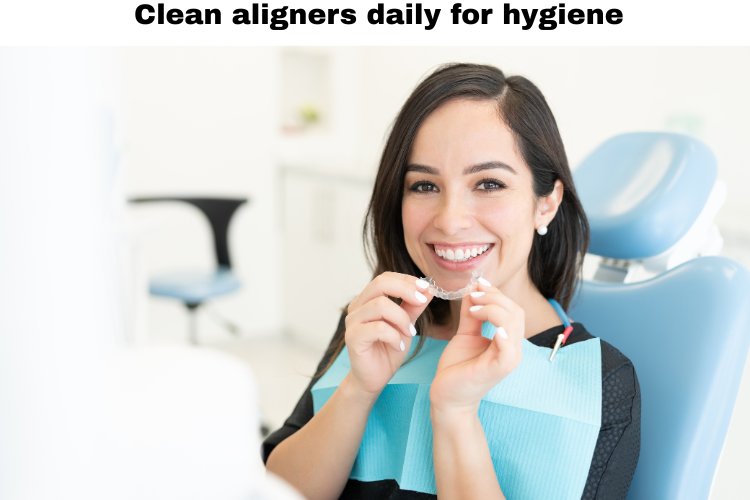Schedule Appointment




Using clear aligners like Invisalign can be a game changer for your smile. These almost invisible drawers gradually convert the teeth into adjustment, providing a sound option for metal strives. However, unlike traditional seals, adjustments are removable—which means that an oral hygiene routine becomes even more important. Maintaining proper dental care during treatment helps prevent problems such as plaque buildup, tooth decay, and gum disease, which can delay your progress or cause discomfort.
During clear aligners treatment, brushing your teeth after each meal is one of the most important habits you must develop. Food particles that are left in your mouth may become lodged beneath your aligners, providing an environment that is conducive to the growth of bacteria. Bad breath, cavities, and plaque buildup may result from this.
Use a toothbrush with soft bristles and fluoride toothpaste. For a minimum of two minutes, gently brush in circular motions. Make sure you never miss a cleaning session by keeping a travel toothbrush kit with you.
Flossing is often overlooked, but it’s essential when using clear aligners. It removes food and plaque from between the teeth—areas that brushing alone can’t reach. Without flossing, plaque can harden into tartar and cause gum inflammation or tooth decay.
Consider using waxed floss, dental picks, or water flossers if traditional floss is too difficult or time-consuming. Water flossers are particularly helpful for people with tight spaces between their teeth or dental restorations.
Clear aligners is just as important as brushing your teeth. When aligners are not cleaned regularly, they can become cloudy and develop odors due to bacterial buildup.
Rinse your aligners with lukewarm water every time you remove them. Once a day, clean them using a soft toothbrush and a clear, antibacterial soap or aligner cleaning crystals. Avoid using toothpaste, which can be abrasive, or hot water, which can warp the plastic.
Clear aligners are not designed to withstand the pressure and temperature of eating or drinking (other than water). Consuming food or sugary drinks while wearing aligners can cause staining, odors, or even warping of the material.
Always remove your aligners before eating or drinking anything other than plain water. Once finished, rinse your mouth and brush your teeth before reinserting them.
Regular water consumption keeps your mouth moist and helps wash away food particles. Bad breath and bacterial growth can result from a dry mouth. Maintaining proper hydration also promotes general health and lessens the likelihood of gum irritation from aligners rubbing against your teeth.
Using an alcohol-free, antibacterial mouthwash once a day can help reduce plaque and freshen your breath. It’s especially helpful at night, after you’ve finished brushing and flossing. Swish for about 30 seconds to allow the active ingredients to reach between your teeth and along the gum line.
When you’re not wearing your aligners, store them in their protective case. Leaving them out exposes them to bacteria and increases the risk of losing or damaging them. Make it a habit to keep your case with you at all times, especially during meals or travel.
Your aligner case can also harbor bacteria if not cleaned regularly. Wash it at least once a day with mild soap and warm water, then dry it thoroughly. A clean case ensures that your fresh clear aligners don’t get contaminated when stored.
Maintaining oral hygiene also involves being disciplined with your aligner schedule. Most orthodontists recommend wearing them for 20–22 hours a day. Removing them for extended periods increases the risk of food buildup, stains, and treatment delays.
Regular dental visits are essential, even during orthodontic treatment. Your dentist can detect early signs of decay, gingivitis, or enamel erosion. They’ll also clean areas you may miss and ensure your oral health supports your aligner progress.
Brush after every meal to prevent plaque buildup and odor.
No, toothpaste can be abrasive and damage the aligners. Use mild soap or a special cleaner.
Rinse your mouth and aligners with water, then brush as soon as possible.
Yes, they are great for cleaning between teeth and along the gumline.
No, it can stain the aligners. Always remove them before drinking anything but water.
At least once a day using a gentle cleanser and lukewarm water.
Maintaining excellent oral hygiene during clear aligner treatment is crucial—not just for keeping your trays clear and odor-free, but for ensuring the success of your smile transformation. Simple habits like brushing after meals, flossing, and cleaning your aligners daily can make a significant difference. Combine that with regular dental checkups, and you’ll be well on your way to achieving a straighter, healthier smile.
Protect your smile and your progress—stay consistent with your aligner hygiene routine.
Visit Dr. Gowds Dental Clinic in Hyderabad (Gachibowli, Madhapur, Koti, Puppalaguda) to start your journey today!